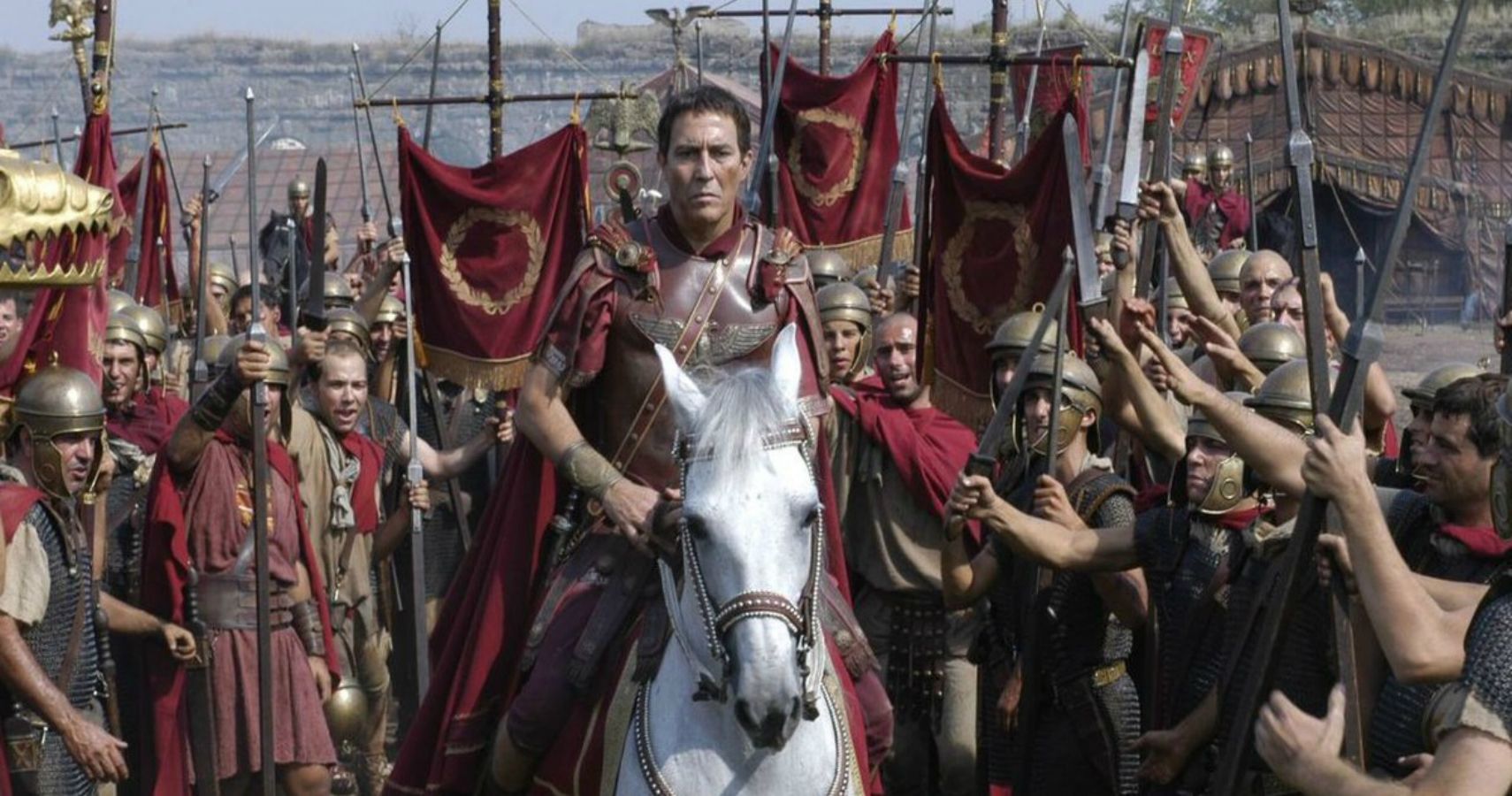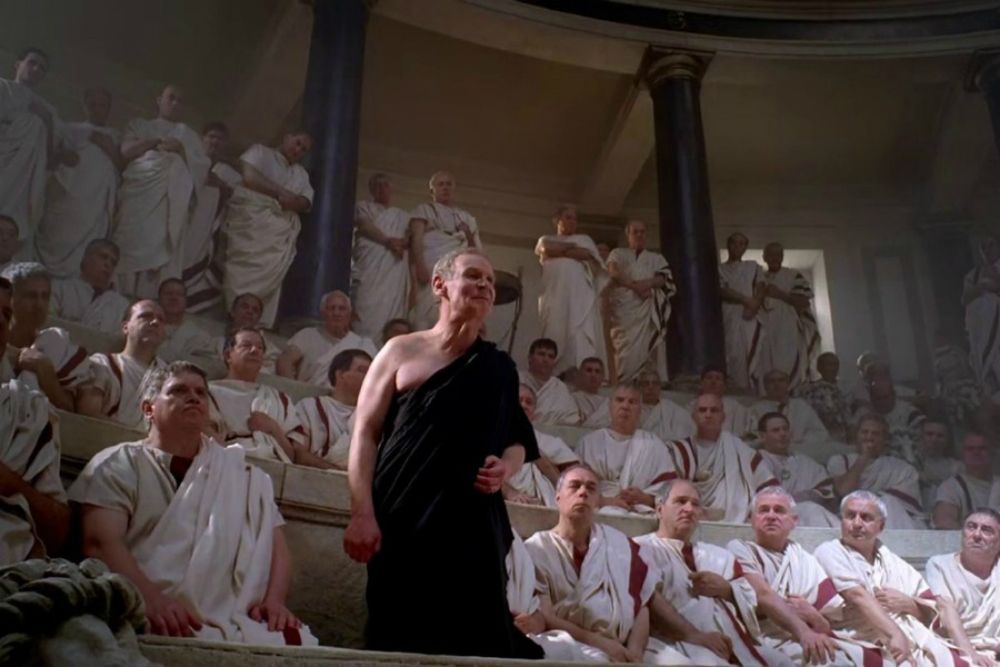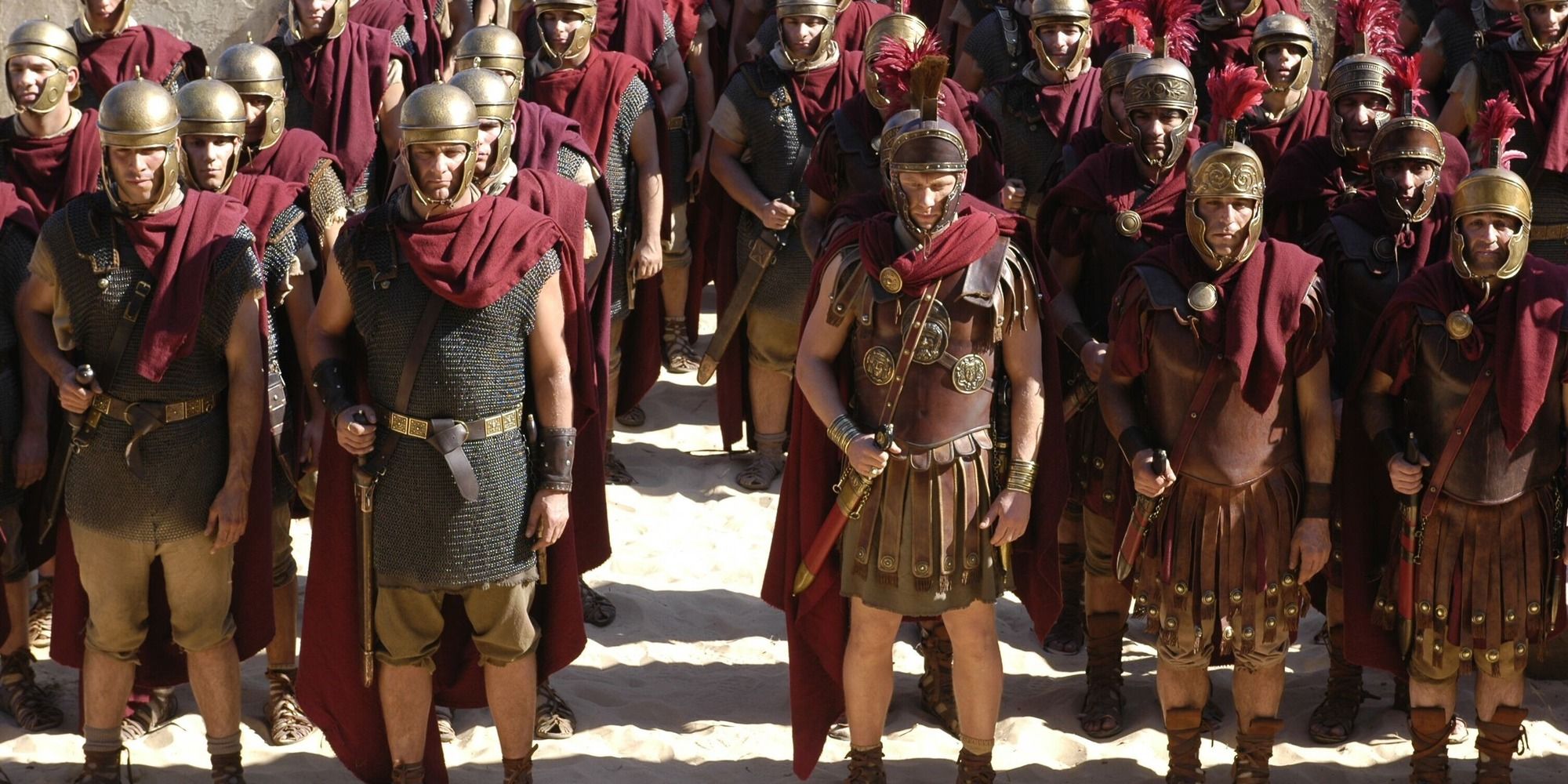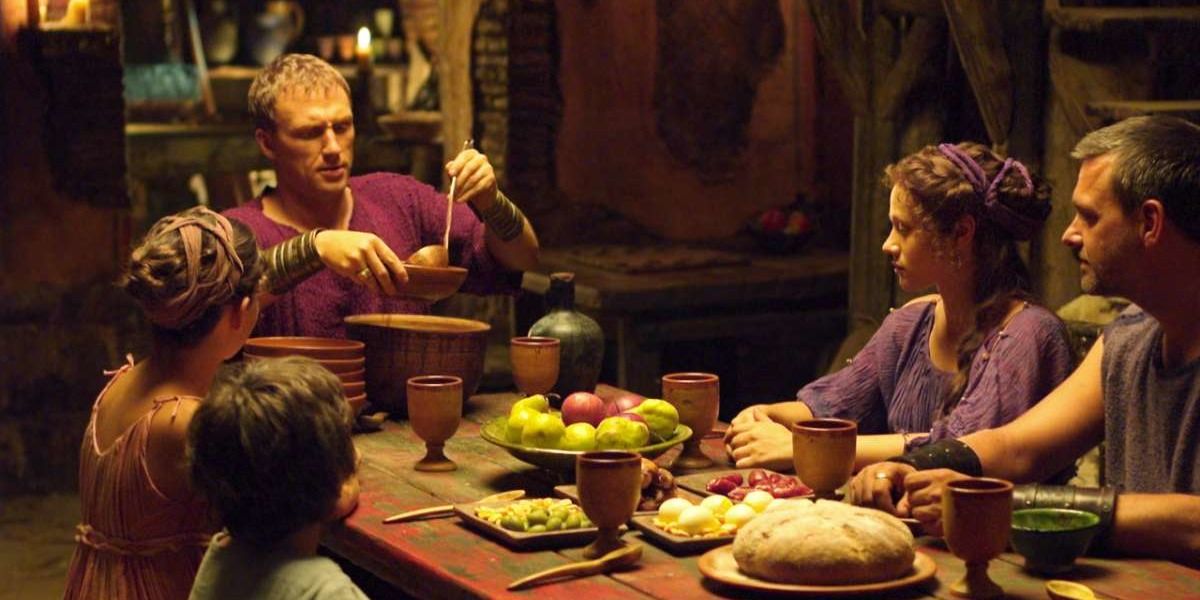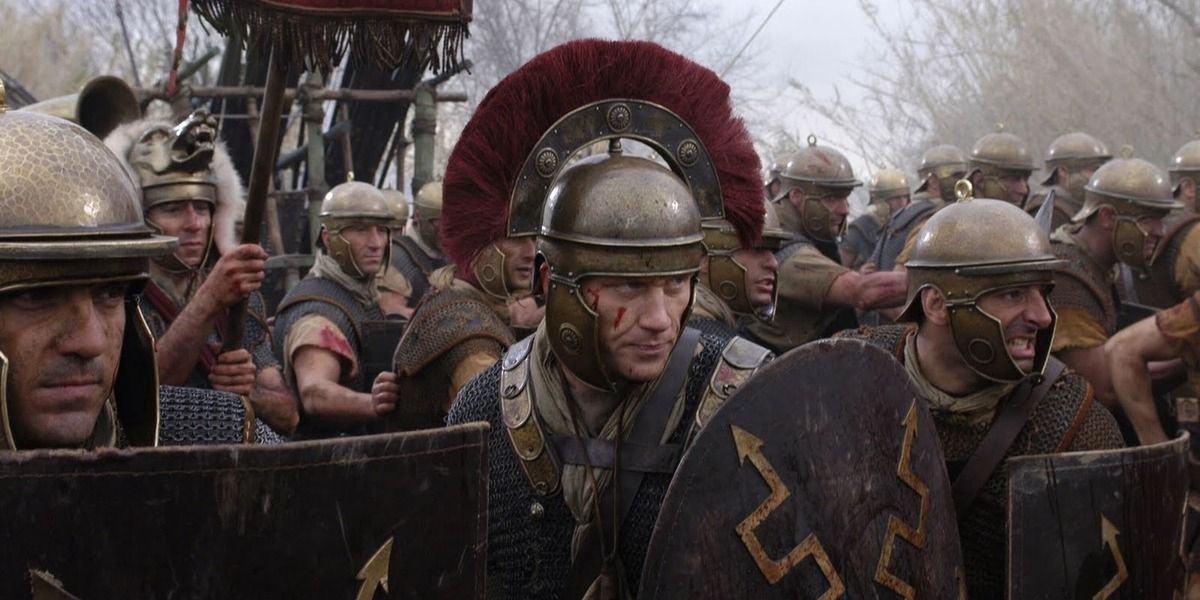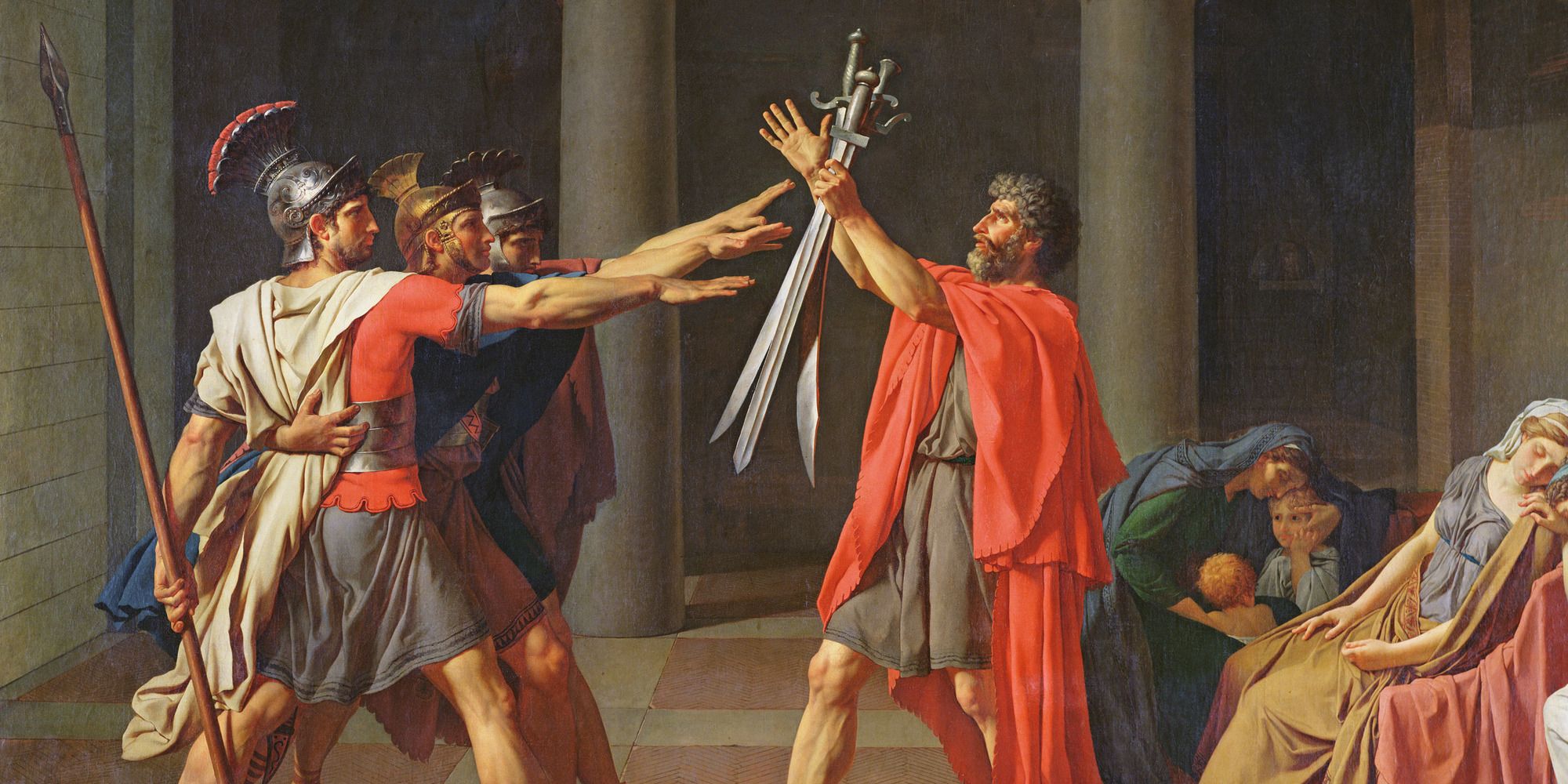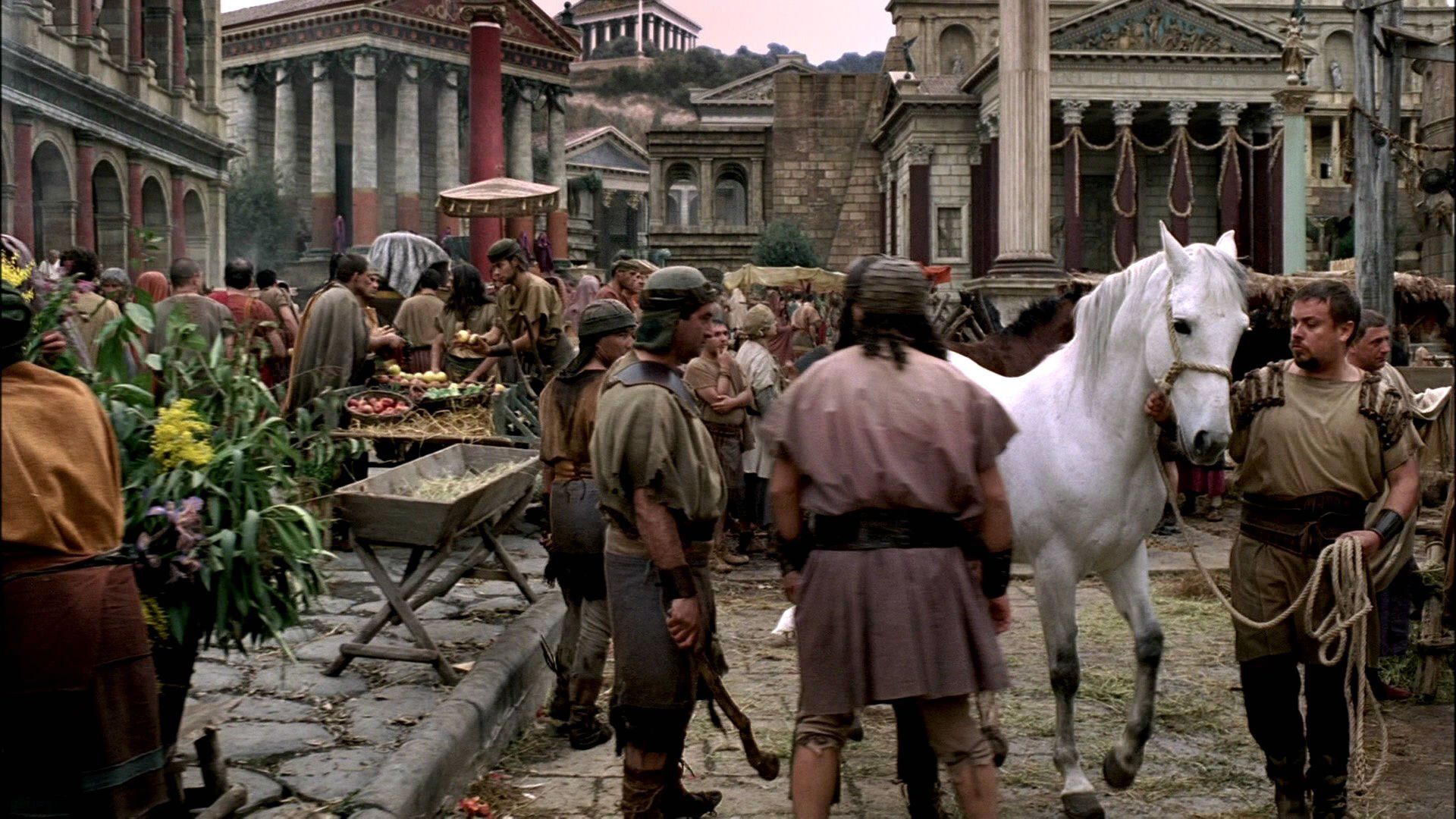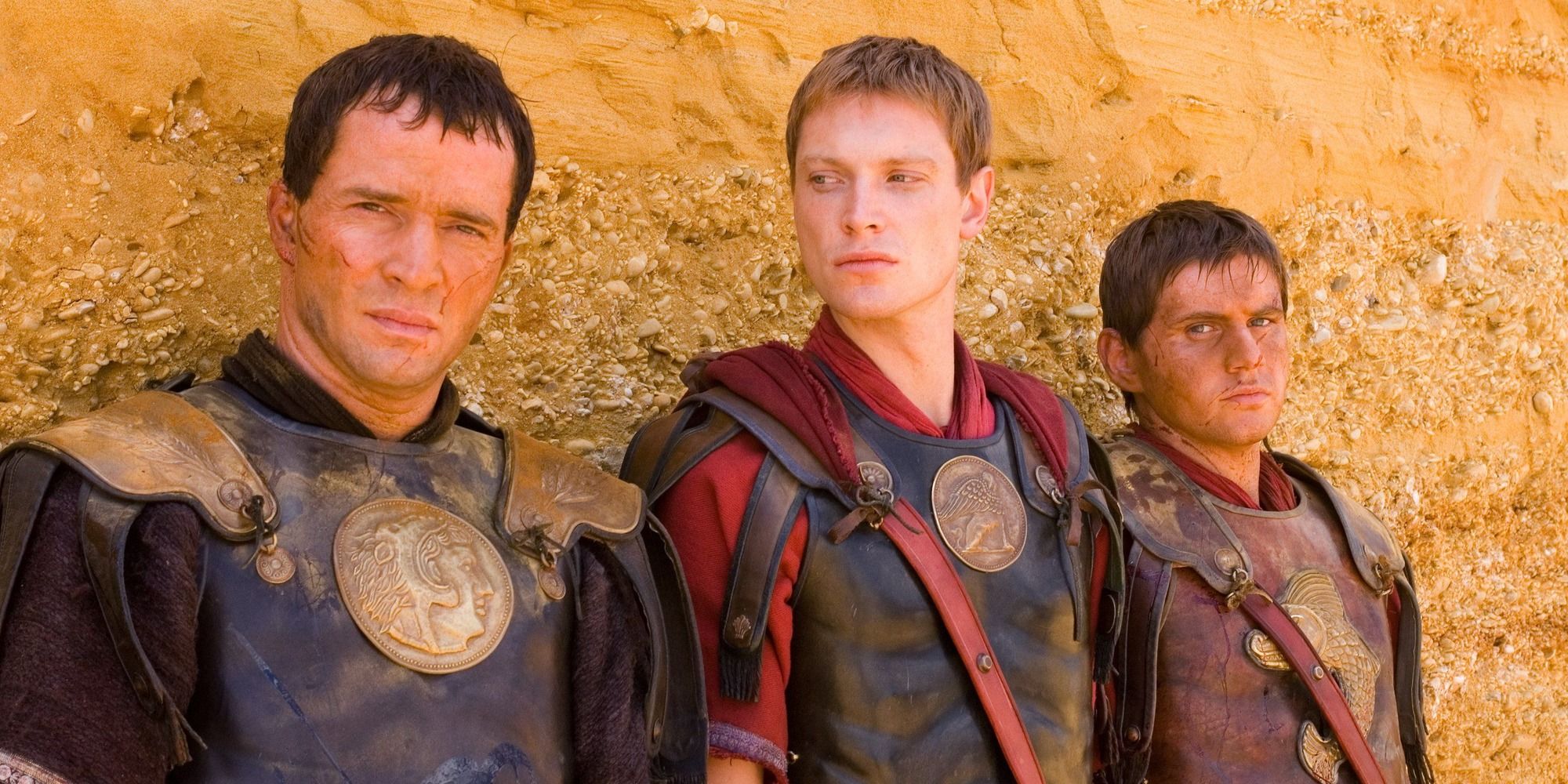Who doesn't love an old-fashioned peplum flick? An epic genre that dates from the Golden Age of Hollywood, these movies never really went out of style. Their popularity, massive budgets, and legendary characters rival our modern superhero films. The saga of ancient Rome, with its opulent lifestyle, breathtaking architecture and dramatic politics, is a popular subject. The HBO drama Rome, which spanned two seasons between 2005 and 2007, was one of the more recent interpretations of this crucial moment in history. It was more realistic and visceral than others that had come before it, with impressive respect for the real history of the period. However, the show still has a few glaring inaccuracies. Some of these can be explained for the sake of screen adaptation while others just seem like silly mistakes.
False: Cato's Rant
The series opens up in the first episode with a noisy debate in the Roman Senate. Cato the Younger, a real historical figure distinctively dressed in black, demands Ceaser lose his rights and privileges as Pompey's co-counsel. Something like this did happen in the Senate during Ceasar's absence, but the writers have deliberately made some profound changes and due to to the sheer volume of historical context involved and have simply decided to leave a lot of it out. For example, the audience wouldn't know that Caesar never shared his council seat with Pompey. In fact, the Senate never would have paired up the two to be co-counsels, as they were known to be close friends—at least at the time. The idea of a co-counsel was to counteract the other and keep everything balanced.
True: Period Armor
Most screen adaptions of Rome show a certain type of segmented armor because it's what a modern viewer would associate with Rome. However, this type of armor is from a century after Ceasar's time. Rome gets this right by dressing the soldiers in a mix of leather and chain mail, which was what the Romans fighting in the Gallic Wars would have actually worn. Other accessories, like the iconic square shield and short, fat sword, are accurate for the time and carried over into later years. This is one of the details that keeps the show authentic, even if they can't keep everything factual.
False: Lucius Vorenus and Titus Pullo
These are the two main characters in Season One of the series. These names are mentioned in writing by Julius Ceasar, so we do know that the names are real. However, that's where the historical accuracy ends. These characters weren't exactly constructed out of thin air, but their portrayals and lives as told in Rome are totally fabricated.
Julius Ceasar named these gentlemen in his memoirs but says nothing else about them other than they were both Centurians in the 11th Legion, not the 13th, as in the series. Their historic status as Centurians would have indicated the real figures came from royal or Patrician families. In the series, both are pure plebians or common working-class people of Rome but not Centurians. For the writers who needed to invent a way for the audience to connect with the Roman people and also learn something about their ancient society, this makes a lot of sense. It's factually wrong but at least it was done for the right reasons.
True: Roman Military Tactics
"Get back into formation!" This is a phrase that you'll hear if you're watching one of the battle scenes that involves Roman soldiers. Virtually every movie about the ancient world gets this wrong for the simple reason that a chaotic battle scene is so much more engaging for the audience to watch. Roman armies were very methodical fighters, however, and had strict rules about staying in proper formation as part of a larger, more complex strategy. They attacked in lines, with one man fighting at the front, then moving to the back of the line to wait for his turn again. Image how boring that would look on film. In Rome, they pull it off by showing one of the main characters aggressively getting wayward soldiers back in their lines.
False: The Roman Salute
We see this a few times in the series and don't even think about its accuracy. Citizens give Ceasar the salute as he rides into town, and military men regularly salute their superiors or even each other. It might be a surprise, as this is a popular misconception, but we have no record that the Roman salute ever existed. Surviving Roman mosaics, statues, or other works of art never mention or portray the salute. It's possible that the idea started with a romantic painting called The Oath of the Horati by Jacques-Louis David. Since this painting dates from 1784, well past the Roman era, it's safe to say this is false.
True: The First Triumvirate
The Senate controlled the power of the Roman government initially, but it was the union of the First Triumvirate that challenged their power. It consisted of three powerful men, Julius Ceasar, Pompey Magnus, and the man bankrolling Ceasar's rise to power, Marcus Crassus. If you've seen the classic film Spartacus, then you already know some of the backstories here, as all three characters defended Rome from the Slave Rebellion. We're introduced to their power in Season One, who they are and what they did, and their portrayals are accurate.
It's important for the story to get this right, as it's connected to the real-life drama of how the First Triumvirate fell apart. Pompey was married to Cesar's only child, Julia, and when she died in childbirth, the link between Pompey and Cesar was severed. Pompey was eventually seduced by Ceasar's enemies to turn against him, and in 53 BC, Crassus was killed in battle. Years later, a misguided Egyptian prince would give Pompey's severed head to Ceasar as a gift. This incident, and Julius Ceasar's extreme grief and disgust at the gift, are true.
False: Cleopatra's Arrival in Rome
Most of the storyline in Rome that involves Cleopatra's political machinations have been changed, and none more than this. Considering she was supposed to be so smart about these things, this doesn't make a lot of sense other than to create more drama for the viewer. Historically, Cleopatra was in Rome when Ceasar was murdered, and when that happened, she got herself and her young child out of town as quickly as possible. In the show, in what would seem like total insanity in real life, she deliberately arrives in Rome right after his shocking murder in some kind of misguided political power play. This is clearly to excite the audience, but it is totally false, as it puts her and her child in mortal danger.
True: The Painted City
Ask someone what color the Roman Coliseum is, and you'd get a funny look. Today we think of Rome as a place of white marble and grey marble pillars. Modern portrayals of Roman don't change this very much since they don't want to confuse the audience. In Rome, however, the city is portrayed in a much more realistic and colorful light to keep the environment more historic. Pillars, statues, and other public landmarks are often shown painted, and there's plenty of authentic graffiti lining the concrete and marble walls.
False: Atia, Mother of Octavian
Atia was a real person, and her authentic Roman bloodline is a virtual "who's who" of Roman history. In the show, she's an ambitious, politically savvy woman who tirelessly grooms her son for life in Roman politics and as an Emporer. In real life, however, Atia was the ancient version of a helicopter parent. She sheltered her son so mercilessly that she was famous for it. He was under her constant supervision, even as a young adult, and she fretted constantly over his health. Octavian avoided military skirmishes and sports mostly because of her influence, a far cry from the woman we see in Rome.
True: Marc Anthony vs Octavian
You might think the rivalry between Ceasar's two most obvious heirs was exaggerated for the sake of drama, but this is true. The character of these two men is also accurately portrayed, with Octavian being a smarter, more calculating person and Marc Antony as a lusty, impetuous soldier. The competition between the two was fierce, but cooler heads prevailed, and Octavian eventually became Emporer. Julius Ceasar always had more respect for Octavian's keen mind, and like Atia, tended to protect him from military involvement. Even Julius Ceasar, who loved Marc Antony dearly, knew his passion would ruin him.

